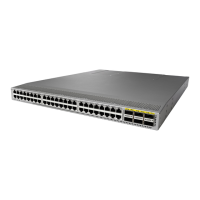Send comments to nexus3k-docfeedback@cisco.com
-SM-46
Cisco Nexus 3000 Series NX-OS System Management Command Reference
OL-29557-04
Chapter System Management Commands
destination-profile (Call Home)
destination-profile (Call Home)
To create a user-defined destination profile, modify a predefined or user-defined destination profile, or
configure the message format for that new destination profile, use the destination-profile command. To
remove the destination profile, use the no form of this command.
destination-profile {CiscoTAC-1 | {{full-txt-destination | short-txt-destination}{message-level
level | message-size size}}} {alert-group alert | email-addr email-address | http url |
transport-method {email | http}}
destination-profile profile-name [alert-group alert | email-addr email-address | format {XML |
full-txt | short-txt} | http url | message-level level | message-size size | transport-method
{email | http}]
no destination-profile
Syntax Description CiscoTAC-1 Configures a destination profile for Extensible Markup Language (XML)
messages.
full-txt-destination Configures a destination profile for plain text messages.
short-txt-destination Configures a destination profile for short text message.
message-level level Specifies the Call Home message severity level. The range is from 0 to 9,
with 0 being the lowest urgency, and 9 the highest urgency.
message-size size Specifies the maximum message size. The range is as follows:
• full-txt-destination—From 0 to 5000000, and the default is 2500000.
• short-txt-destination—From 0 to 100000, and the default is 4000.
• CiscoTAC-1—5000000, which is not changeable.
alert-group alert Associates one or more alert groups with a destination profile. The alert
group can be one of the following:
• All—All alert groups
• Cisco-TAC—Cisco TAC events
• Configuration—Configuration events
• Diagnostic—Diagnostic events
• EEM—EEM events
• Environmental—Power, fan, and temperature-related events
• Inventory—Inventory status events
• License—Licensing events
• Linecard-Hardware—Linecard-related events
• Supervisor-Hardware—Supervisor-related events
• Syslog-group-port—Syslog message events filed by the port manager
• System—Software-related events
• Tes t—User-generated test events
email-addr Specifies the e-mail address to which the alert should be sent.

